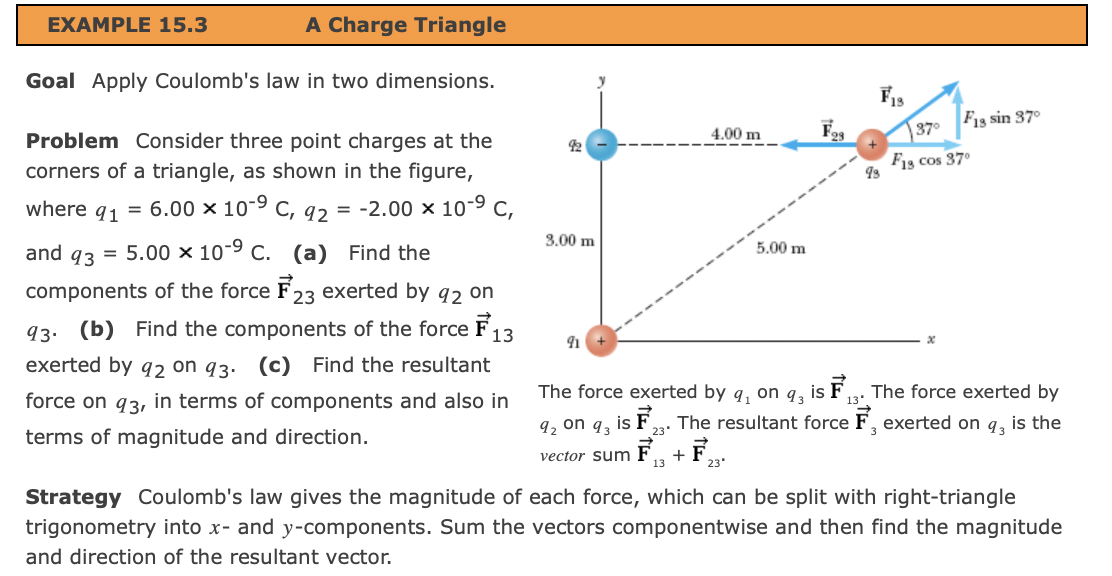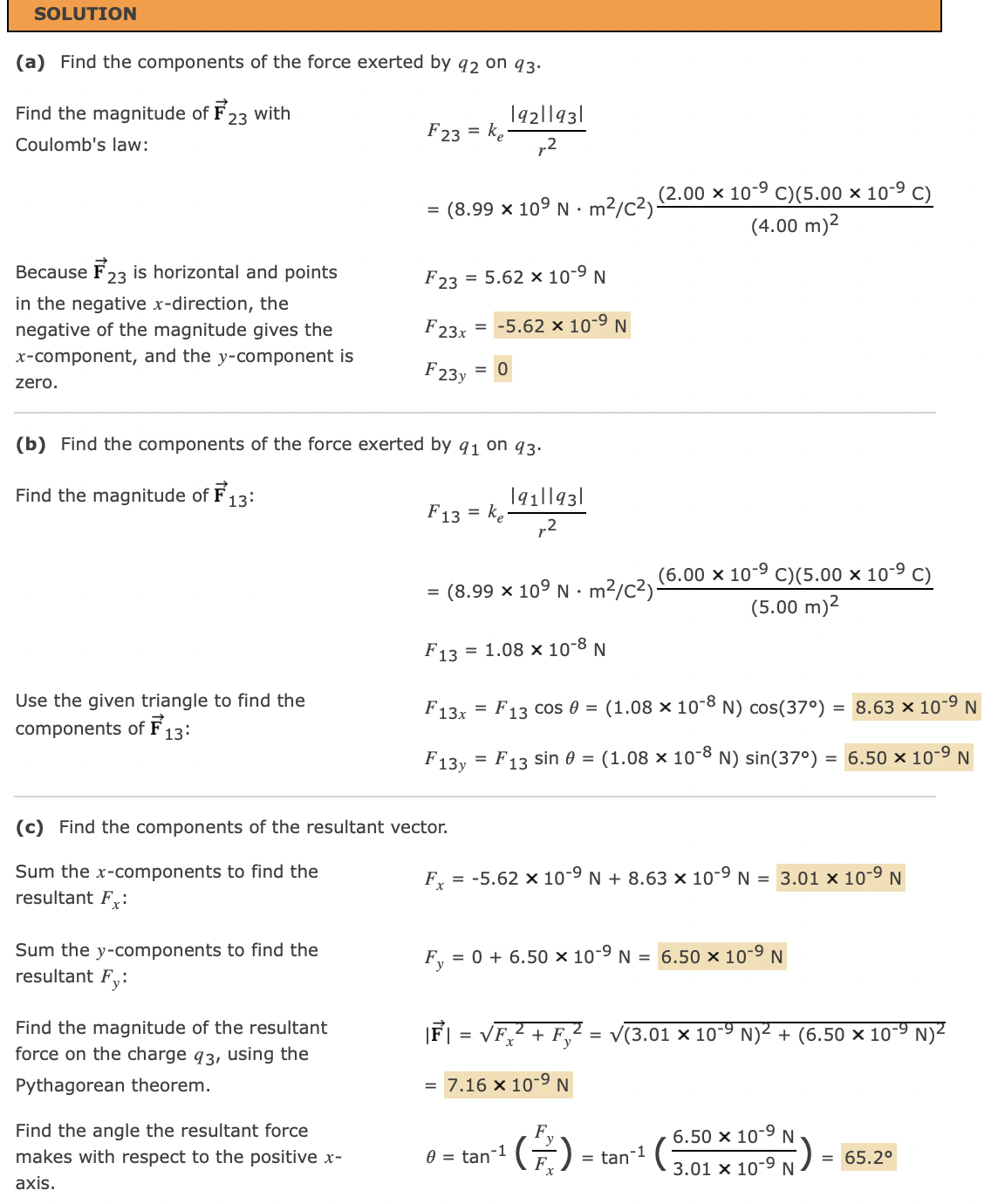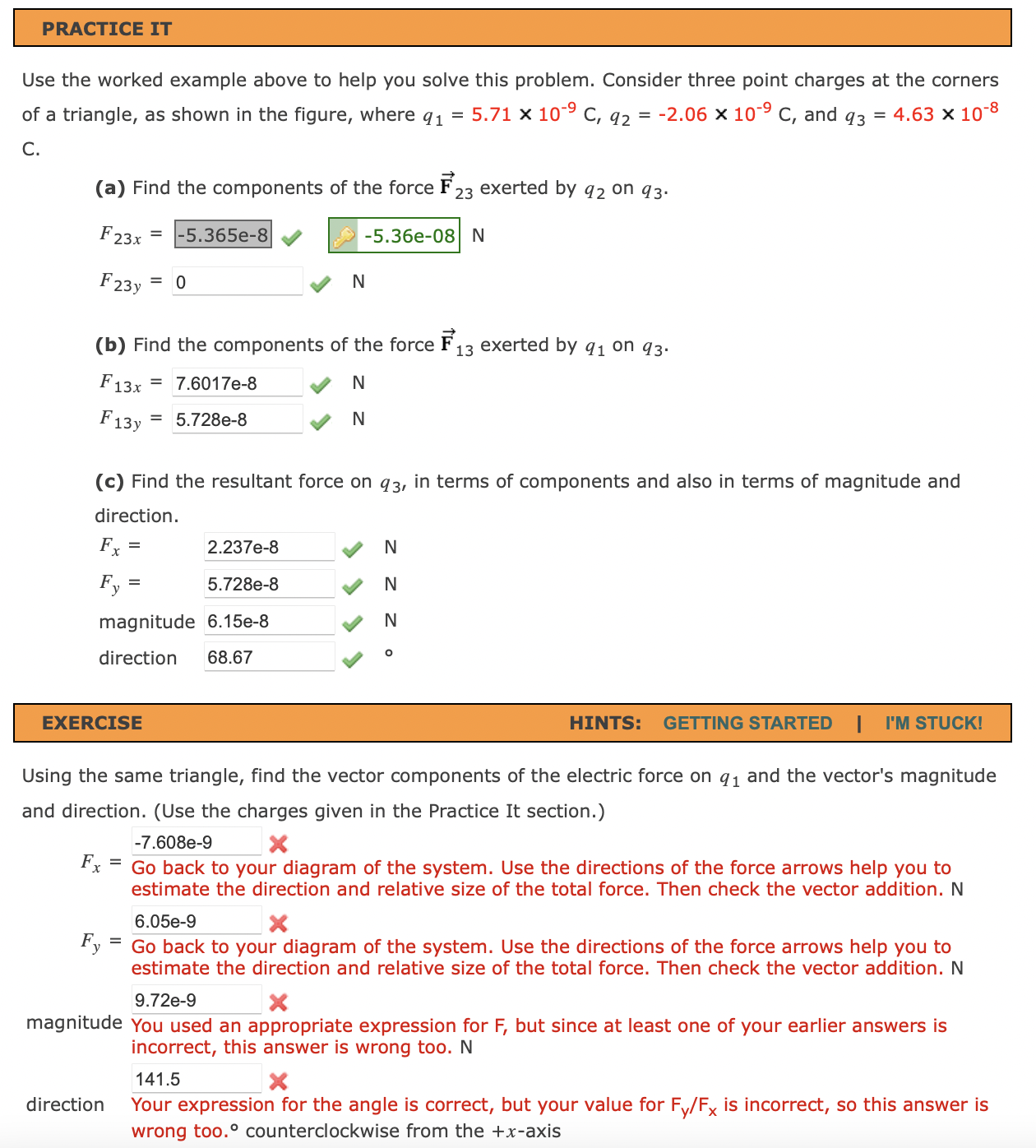Home /
Expert Answers /
Physics /
goal-apply-coulomb-39-s-law-in-two-dimensions-problem-consider-three-point-charges-at-the-corners-of-pa867
(Solved): Goal Apply Coulomb's law in two dimensions. Problem Consider three point charges at the corners of ...



Goal Apply Coulomb's law in two dimensions. Problem Consider three point charges at the corners of a triangle, as shown in the figure, where , and . (a) Find the components of the force exerted by on . (b) Find the components of the force exerted by on . (c) Find the resultant force on , in terms of components and also in terms of magnitude and direction. The force exerted by on is . The force exerted by on is . The resultant force exerted on is the vector sum Strategy Coulomb's law gives the magnitude of each force, which can be split with right-triangle trigonometry into - and -components. Sum the vectors componentwise and then find the magnitude and direction of the resultant vector.
(a) Find the components of the force exerted by on . Find the magnitude of with Coulomb's law: Coulomb's law: Because is horizontal and points in the negative -direction, the negative of the magnitude gives the -component, and the -component is zero. (b) Find the components of the force exerted by on . Find the magnitude of : (c) Find the components of the resultant vector. Sum the -components to find the resultant : Sum the -components to find the resultant : Find the magnitude of the resultant force on the charge , using the Pythagorean theorem. Find the angle the resultant force makes with respect to the positive axis.
Use the worked example above to help you solve this problem. Consider three point charges at the corners of a triangle, as shown in the figure, where , and C. (a) Find the components of the force exerted by on . (b) Find the components of the force exerted by on . (c) Find the resultant force on , in terms of components and also in terms of magnitude and direction. EXERCISE HINTS: GETTING STARTED | I'M STUCK! Using the same triangle, find the vector components of the electric force on and the vector's magnitude and direction. (Use the charges given in the Practice It section.) estimate the direction and relative size of the total force. Then check the vector addition. Go back to your diagram of the system. Use the directions of the force arrows help you to estimate the direction and relative size of the total force. Then check the vector addition. magnitude You used an appropriate expression for , but since at least one of your earlier answers is incorrect, this answer is wrong too. direction Your expression for the angle is correct, but your value for is incorrect, so this answer is wrong too. counterclockwise from the -axis